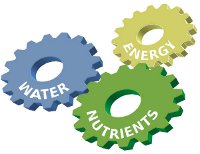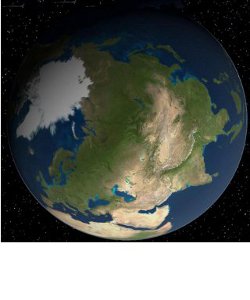|
 |  |
| Sanitation today – and tomorrow |
 |
The green planet
Our planet is huge but has limited resources. Seen from space we can identify cultivated fertile
areas as well as uninhabitable areas with sparse population. About half of the world's population
live near to seas, lakes and rivers.
Had you seen the globe two hundred years ago, it would have looked very different. At that time
the world population was 1 billion people, and today we are 6 billion. The then vast untouched
areas were not affected by human activities, only by natural processes.
|
 |
The six-fold increase in population is alarming in itself, but is aggravated by the
fact that each person consumes ever more. In the last century population has tripled, water use
has increased six-fold, and the extraction of natural resources 12-fold. World Watch Institute
estimated that if every Chinese were to eat an egg daily, the required cultivated land to feed
the hens would be as large as Australia's total farmland.
It is in this perspective that recirculation and reuse has come to the fore. Food and consumer
goods all end up somewhere after use. Sustainable sanitation connects the use and disposal of
products to production of new products.
|
| Learning objective: to understand prevailing sanitation conditions in various
corners of the world.
Discuss your thoughts with colleagues/peers and identify some research questions you would like
to investigate. Write down for your own record what you already know or think about this issue,
and what you would like to know more about – before you continue to read.
|
For comments Please see Intro 6 in
pdf version of
Introduction chapter |



